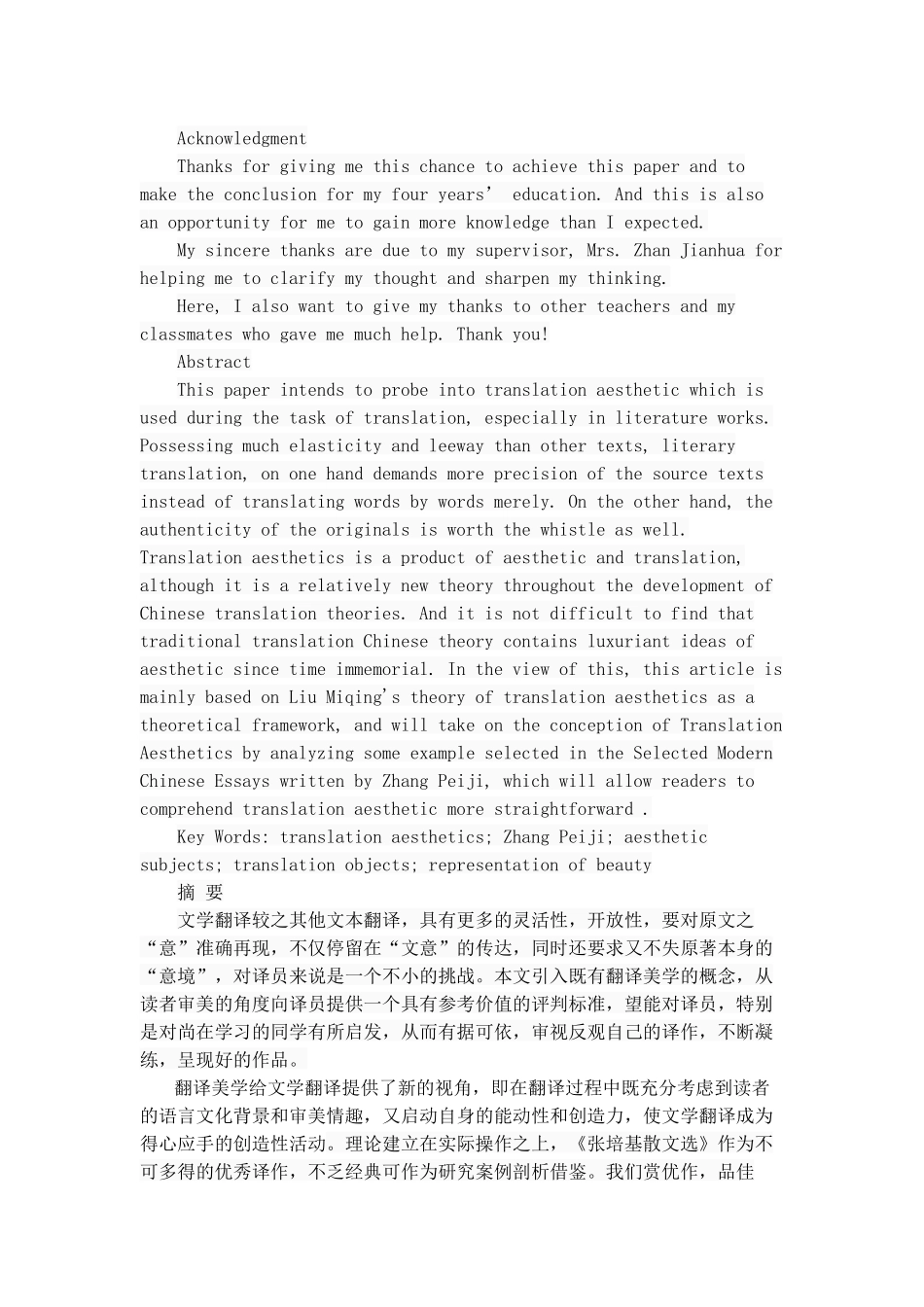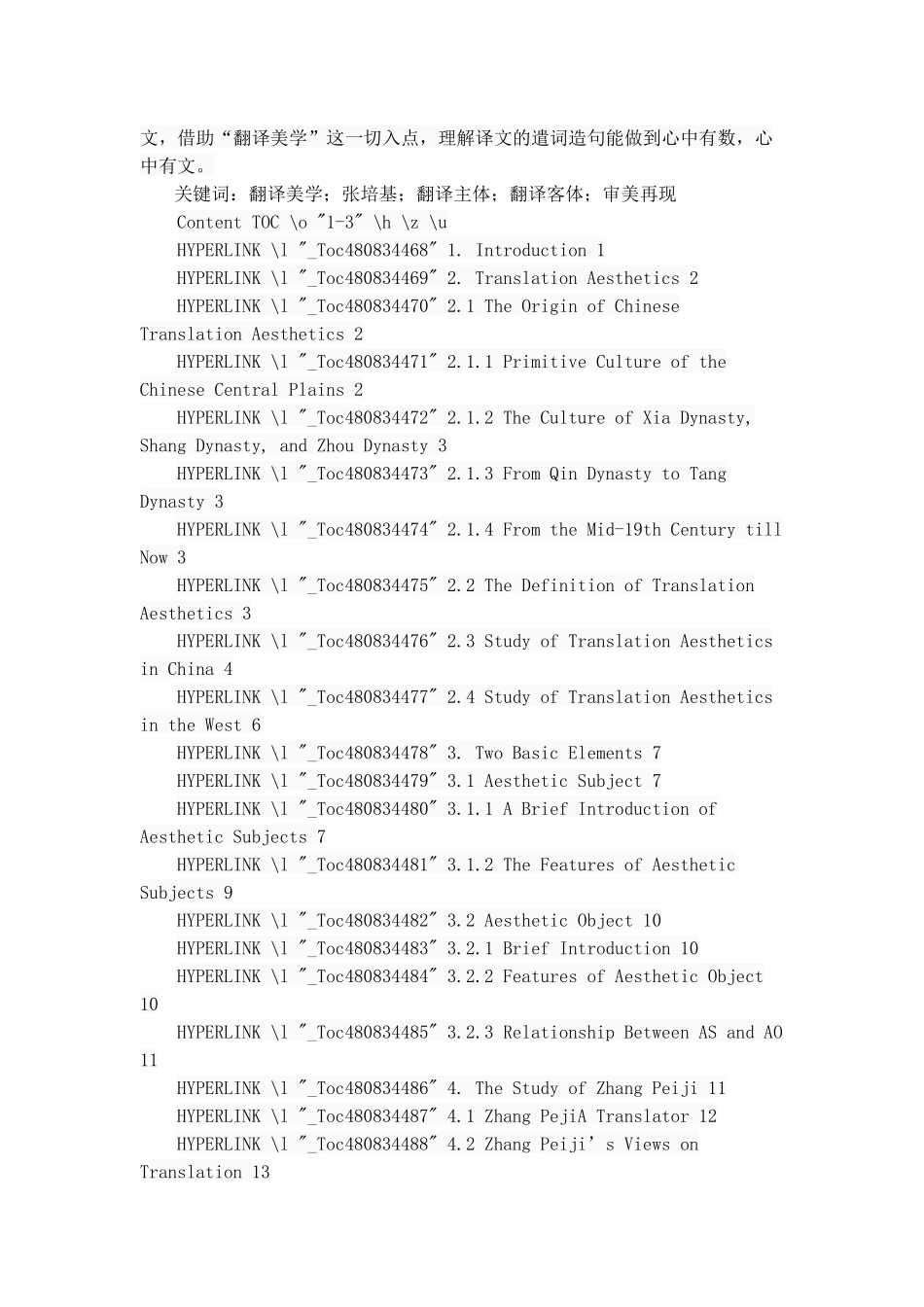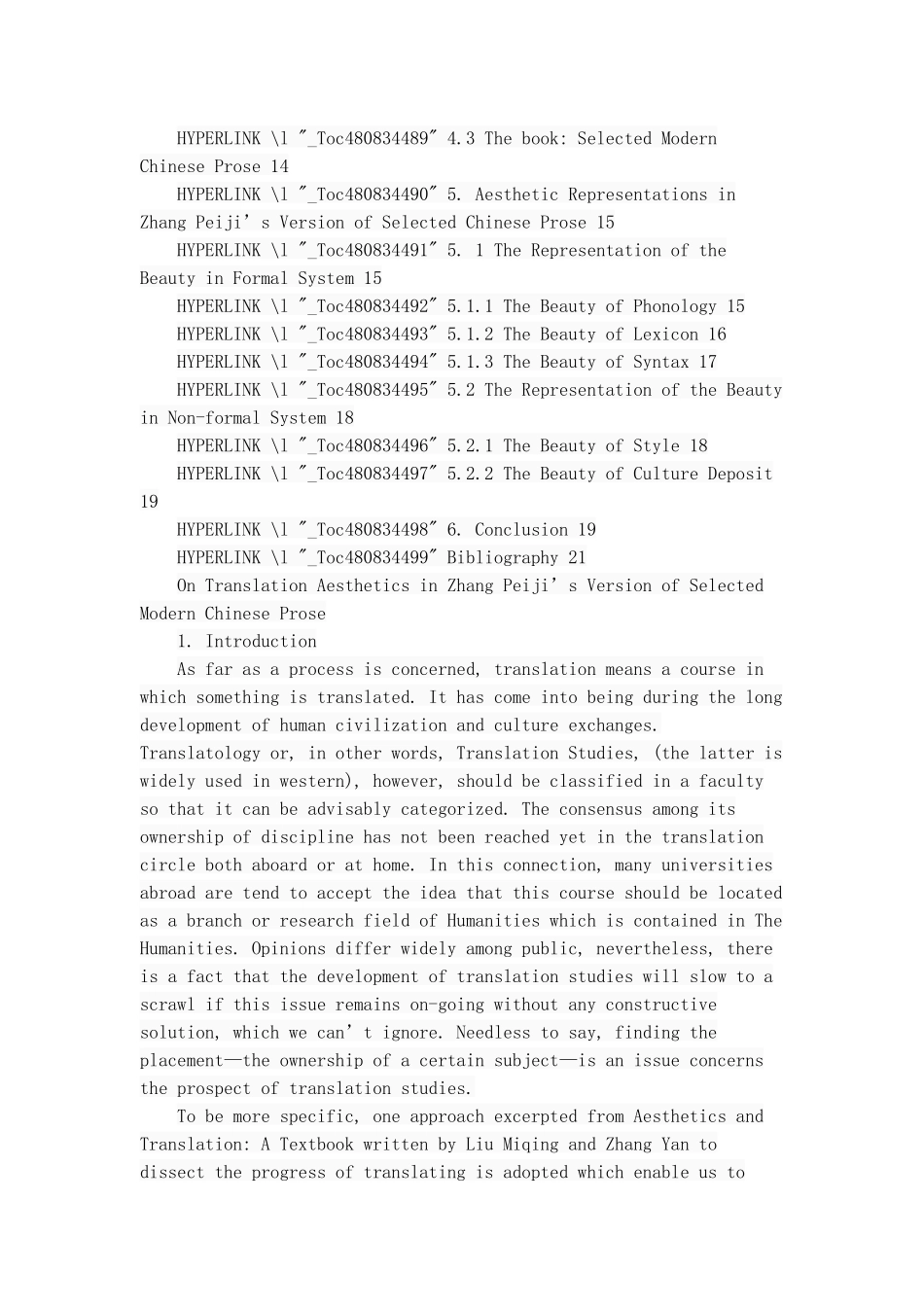AcknowledgmentThanks for giving me this chance to achieve this paper and to make the conclusion for my four years’ education. And this is also an opportunity for me to gain more knowledge than I expected.My sincere thanks are due to my supervisor, Mrs. Zhan Jianhua for helping me to clarify my thought and sharpen my thinking.Here, I also want to give my thanks to other teachers and my classmates who gave me much help. Thank you!AbstractThis paper intends to probe into translation aesthetic which is used during the task of translation, especially in literature works. Possessing much elasticity and leeway than other texts, literary translation, on one hand demands more precision of the source texts instead of translating words by words merely. On the other hand, the authenticity of the originals is worth the whistle as well. Translation aesthetics is a product of aesthetic and translation, although it is a relatively new theory throughout the development of Chinese translation theories. And it is not difficult to find that traditional translation Chinese theory contains luxuriant ideas of aesthetic since time immemorial. In the view of this, this article is mainly based on Liu Miqing's theory of translation aesthetics as a theoretical framework, and will take on the conception of Translation Aesthetics by analyzing some example selected in the Selected Modern Chinese Essays written by Zhang Peiji, which will allow readers to comprehend translation aesthetic more straightforward .Key Words: translation aesthetics; Zhang Peiji; aesthetic subjects; translation objects; representation of beauty摘 要文学翻译较之其他文本翻译,具有更多的灵活性,开放性,要对原文之“意”准确再现,不仅停留在“文意”的传达,同时还要求又不失原著本身...


